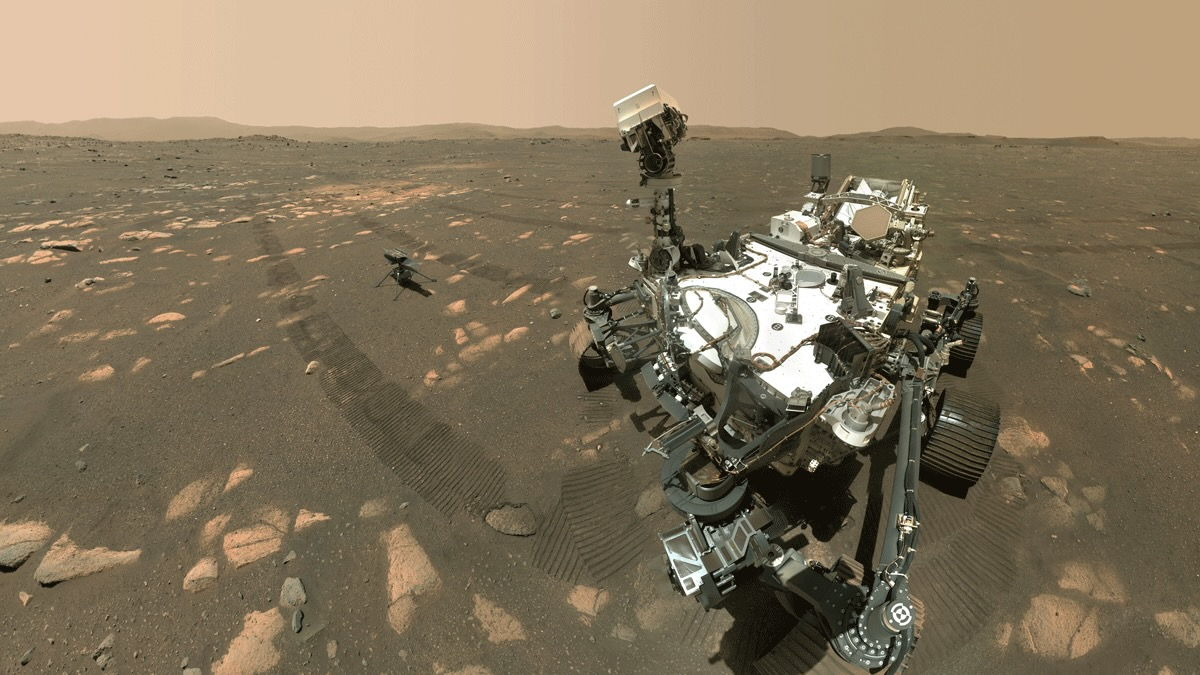NASA's Mars robots are on their own right now — here's why

NASA has temporarily stopped sending commands to its Mars-exploring robots, but there's nothing to worry about.
We're currently experiencing a "Mars solar conjunction," a two-week stretch in which Earth and the Red Planet are situated on opposite sides of the sun. Mars mission teams halt commands during such alignments, which occur roughly every two years, for safety reasons.
"The missions pause because hot, ionized gas expelled from the sun's corona could potentially corrupt radio signals sent from Earth to NASA's Mars spacecraft, leading to unexpected behaviors," agency officials wrote in a conjunction explainer on Friday (Nov. 10). (The corona is the sun's outer atmosphere, which is far hotter than the star's surface, for reasons that scientists still don't fully understand.)
Related: Mars: Everything you need to know about the Red Planet
NASA's Mars fleet, however, won't be standing down during conjunction. During the event, which runs from Nov. 10 through Nov. 25, all of the robots will continue doing at least some work.
For example, the "Perseverance and Curiosity rovers will monitor changes in surface conditions, weather and radiation as they stay parked," agency officials wrote in the explainer.
"Although momentarily grounded, the Ingenuity Mars Helicopter will use its color camera to study the movement of sand, which poses an ever-present challenge to Mars missions," they added.
Breaking space news, the latest updates on rocket launches, skywatching events and more!
And NASA's three active Mars orbiters — Odyssey, the Mars Reconnaissance Orbiter (MRO) and MAVEN (short for "Mars Atmosphere and Volatile Evolution") — will still eye the planet from above. Odyssey and MRO will continue snapping images, and MAVEN will keep studying how Mars' atmosphere interacts with solar particles, NASA officials said.
Most of these robots are old hands at riding out conjunctions. Odyssey arrived at Mars in October 2001, for example, and MRO got there in March 2006.
Curiosity has been exploring Mars' huge Gale Crater since August 2012, and MAVEN reached Mars orbit in September 2014. Perseverance and Ingenuity are the relative newcomers in the fleet; the robotic duo landed inside the 28-mile-wide (45 kilometers) Jezero Crater in February 2021.

Michael Wall is a Senior Space Writer with Space.com and joined the team in 2010. He primarily covers exoplanets, spaceflight and military space, but has been known to dabble in the space art beat. His book about the search for alien life, "Out There," was published on Nov. 13, 2018. Before becoming a science writer, Michael worked as a herpetologist and wildlife biologist. He has a Ph.D. in evolutionary biology from the University of Sydney, Australia, a bachelor's degree from the University of Arizona, and a graduate certificate in science writing from the University of California, Santa Cruz. To find out what his latest project is, you can follow Michael on Twitter.
